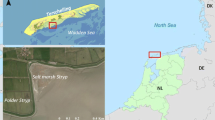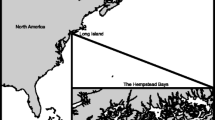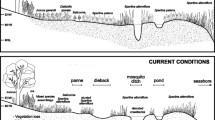Abstract
This paper presents the results from a study which was undertaken to monitor, map and quantify salt marsh change along 440 km of shoreline within the county of Essex, south-east England, between 1973 and 1998. Results indicate that during this 25-yr period, 1000 ha of salt marsh has been lost in Essex, primarily due to coastal erosion. This figure represents ca. 25% of the total salt-marsh area originally present in Essex in 1973. The salt marshes of Essex are important nature conservation areas, with many sites designated as Special Protection Areas under the EC Birds Directive (79/409/EEC) and as Special Areas of Conservation under the EC Habitats Directive (92/43/EEC). Salt marshes are also natural features which significantly dissipate wave and tidal energy, thereby playing an important role in contributing to effective coastal defence. The large-scale loss of salt marsh in Essex has, therefore, implications for both nature conservation and flood defence. Potential hypotheses for, and implications of such losses are discussed in this paper, together with the identification of potential management approaches to alleviate the losses.
Similar content being viewed by others
Abbreviations
- NCC:
-
Nature Conservancy Council
- ITE:
-
Institute of Terrestrial Ecology
References
Anon. 1974.Aspects of the ecology of the coastal area in the outer Thames estuary and the impacts of the proposed Maplin airport. DoE research contract DGR 205/2, Institute of Terrestrial Ecology.
Anon. 1994.A guide to the understanding and management of salt marshes. R&D Note 324, NRA—National Rivers Authority.
Anon. 1997.Essex shoreline management plan. April 1997. Mouchel and Partners Ltd., Surrey.
Anon. 1999.Environment agency estuaries training course. Course literature prepared for Environment Agency (South West Region), June 1999, CGP—Coastal Geomorphology Partnership.
Bakker, J.P., Esselink, P., van der Wal, R. & Dijkema, K.S. 1997. Restoration and management of coastal saltmarshes. In: Urbanska, K.M., Webb, N.R. & Edwards, P.J. (eds.)Restoration ecology and sustainable development, Cambridge University Press, Cambridge.
Burd, F. 1992.Erosion and vegetation change on the salt marshes of Essex and north Kent between 1973 and 1988. Nature Conservancy Council, Research and survey in nature conservation, Report No 42.
Cooper, N.J., Skrzypczak, T. & Burd, F. 2000.Erosion of the salt marshes of Essex between 1988 and 1998. Vol. 1: Implications for flood defence and nature conservation; Vol. 2: A recommended monitoring framework for the future; Vol. 3: Maps of changes in the Essex salt marshes, 1988–1998. Report to Environment Agency (Anglian Region).
Frey, R.W. & Bason, P.B. 1978. North American salt marshes. In: Davis, R. AA. (ed.)Coastal sedimentary environments, pp. 104–164. Springer, Berlin.
Greensmith, J.T. & Tucker, E.V. 1966. Morphology and evolution of inshore shell ridges and mud-mounds on modern inter-tidal flats, near Bradwell, Essex.Proc. Geol. Ass. 77(3):329–346.
Leggett, D.J. & Dixon, M. 1994. Management of the Essex salt marshes for flood defence. In: Falconer, R. & Goodwin, P. (eds.)Wetland management. I.C.E, London.
Lowe, J.P. 1999.Geomorphological investigations for the rivers Crouch and Roach. Report to the Environment Agency (Anglian Region), Report No: STCG15.
Möller, I. Spencer, T. & French, J.R. 1996. Wind wave attenuation over salt marsh surfaces: preliminary results from Norfolk, England.J. Coastal Res. 12: 1009–1016.
Pethick, J.S. 1996.Geomorphological trends in the Blackwater estuary, 1978 to 1994. Report to NRA and English Nature.
Pethick, J.S. 1998.Tollesbury managed set-back: Sedimentary processes. Report to Environment Agency Salt Marsh Steering Group.
Pethick, J.S. 1999.Environment Agency Estuaries Training Course. Presented to Environment Agency (South West Region).
Pethick, J.S. 2001. Coastal management and sea-level rise.Catena 42: 307–322.
Pethick, J.S. in press. The Anglian Coast. In: von Bodungen, B. & Turner, K. (eds.)Science and integrated coastal management. Dahlem University Press.
Ranwell, D.S. 1972.Ecology of salt marshes and sand dunes. Chapman and Hall, London.
Author information
Authors and Affiliations
Corresponding author
Rights and permissions
About this article
Cite this article
Cooper, N.J., Cooper, T. & Burd, F. 25 years of salt marsh erosion in Essex: Implications for coastal defence and nature conservation. J Coast Conserv 7, 31–40 (2001). https://doi.org/10.1007/BF02742465
Received:
Revised:
Accepted:
Issue Date:
DOI: https://doi.org/10.1007/BF02742465




